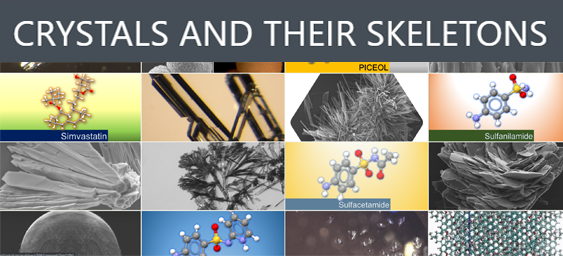Crystals and Their Skeletons
In most solid materials we use in our daily life, the atoms and molecules are not randomly distributed, but organized with a long range order. This microscopic organization, which is named the crystal structure (the crystal skeleton), can be determined using experimental methods, such as X-ray diffraction and a set of mathematical procedures.
The self-assembling process of molecules into crystals often leads to visually appealing macroscopic structures, which are related to the arrangements established at a microscopic level (the molecular packing). These arrangements strongly influence the physical properties of the crystals themselves (e.g. color, melting or solubility), and of the products in which they are used. Therefore, studying the interplay between the crystal structure and properties, both at macro and micro scales, is extremely important to understand how materials with controlled properties and performance can be manufactured. This is, crucial in sectors such as the pharmaceutical industry, that needs to ensure the reproducible manufacture, safety, and efficacy of marketed drugs.
Some years ago our group opened a research line focused on the relationship between genesis, structure, stability and properties of crystals made of organic molecules. This topic is the core of the research project funded by FEDER and Fundação para a Ciência e Tecnologia (FCT-Portugal), projects PTDC/QUI-OUT/28401/2017, LISBOA-01-0145-FEDER-028401. Throughout this project, many images of new crystals have been collected, which are now on display on a webpage. To find more, click on the CRYSTALS AND THEIR SKELETONS image below.

